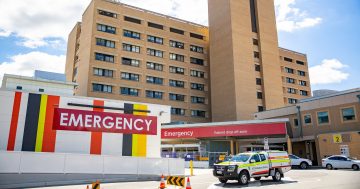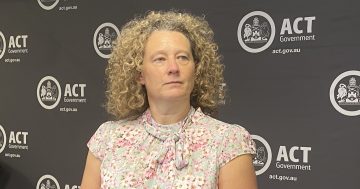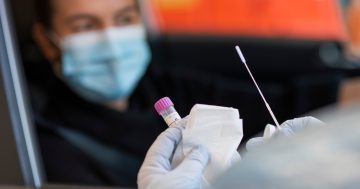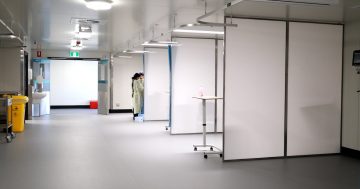
Most students are back to school early this week with things mostly normal. Photo: Dominic Giannini.
With students returning to school in the ACT and NSW this week, a number of measures have been put in place to help keep students and staff safe from COVID-19.
In the ACT, any student or staff member who has returned from Greater Sydney since 11:59 pm on Friday, 9 July, will not be allowed to attend school, and will be required to comply with the strict quarantine requirements currently in place since last week.
This mandatory quarantine covers anyone who returned from Greater Sydney, the Blue Mountains, Central Coast, Wollongong and Shellharbour.
In general, students and staff in the ACT will not be required to wear a face mask after the territory-wide mask mandate was lifted on Friday, 9 July at 11:59 pm.
In a statement, the ACT Education Directorate reminded students and staff that they are free to wear a mask if they wish, while ACT Health continues to encourage the wearing of face masks on public transport or in spaces in which physical distancing is impossible.
Any students or staff members who returned from Greater Sydney before quarantine requirements came into place and are under stay-at-home orders are allowed to attend school and their usual out of school hours care arrangements, but must wear a mask. This is because attending work or school that cannot be completed at home is included in the list of essential reasons to leave home. Parents who are under the same restrictions can leave the house to take their children to and from school, as long as they too wear a mask.
However, all children aged 12 years and under are still exempt from wearing a mask.
Any excursions planned to interstate areas beyond Canberra’s surrounds will not proceed, although lower risk camps and excursions to neighbouring regions like Yass Valley, Goulburn Mulwaree and Queanbeyan-Palerang can still go ahead.
The other change that students and staff will have to become used to will be the expanded use of the Check In CBR app. Checking in will become mandatory for students aged above 16 years and older when catching the bus home or when attending external venues.
The Education Directorate is also encouraging all adult visitors to schools to use the Check in CBR app when they enter the school grounds, as has been advised by the Chief Health Officer, Dr Kerryn Coleman.
Across the border, the use of the Service NSW QR code became mandatory yesterday (12 July) at workplaces, schools and retail businesses.
Teachers and visitors need to sign in, although students are exempt.
Catholic schools in the ACT have the same requirements in place as public schools across the Territory.
In regional NSW, face masks are not compulsory for either students or staff. However, they are recommended for school staff and students upwards of year 7 when in indoor settings.
Masks are, however, mandatory on NSW public transport for those aged above 12.
For schools in NSW outside the Greater Sydney area, all students are expected to be at school unless they have even the mildest of COVID-19 symptoms.
Under the current health orders, there is nothing to restrict students and staff who must attend school from moving between two areas with different levels of restrictions. Students and staff should reduce travelling to geographical areas with higher levels of COVID-19 restrictions in place.
While at school, masks or face coverings are recommended in all indoor settings for all students in year 7 and above, and all staff in school settings.
Masks are mandatory on public transport. This applies to students aged 13 years and over, and staff when travelling to and from school and during school excursions by public transport or by chartered or private transport services.
All camps, excursions outside the school’s local government area and community events within school hours are not permitted and non-essential visitors are not allowed on school grounds.
When picking up students, parents and carers will be required to remain off school grounds.
For information on COVID-safe school arrangements, visit Education ACT. For the latest information on COVID-19 in the ACT, visit the ACT Government. For NSW guidelines, visit NSW.gov.au.



















